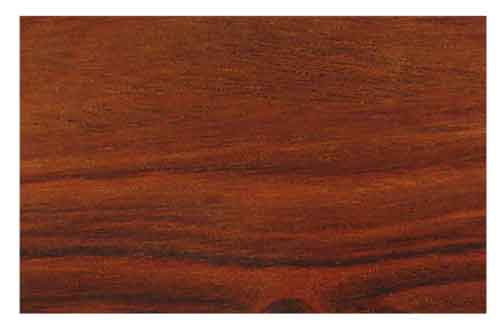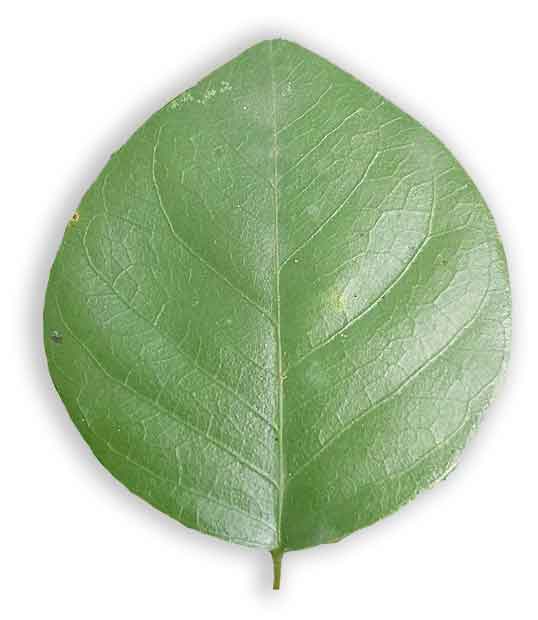 Gen info Gen info
- Dalbergia cochinchinensis is a threatened hardwood-yielding tree, found in Cambodia, Laos, Thailand and Vietnam. (2)
- The demand for the rosewood has led to an epidemic of illegal logging and trafficking, threatening species extinction. Conservationists project the species could be extinct within 10 years (by 2026). (2)
- In 2022, its status was re-evaluated as Critically Endangered.
- D. cochinchinensis is one of the eight hongmu species of rare and valuable "redwood" used primarily in the manufacture and trade of antique-style furniture, especially in China.(4)
- In some Asian countries, black market prices have sky-rocketed, making Siam rosewood more valuable than gold. (2)
- In March 3, 2017, The Bureau of Customs published customs memorandum circular No. 41-2017 on the suspension of commercial trade in Dalbergia cochinchinensis (Rosewood) except finished products, including carvings and furniture from Lao's Democratic Republic until such a time that said country complied with conditions indicated therein.
(8)
 Botany Botany
• Dalbergia cochinchinensis is a slow-growing medium-sized evergreen tree reaching a height of 35 meters, with a spherical, profusely branched crown. Trunk is up to 60 centimeters in diameter, occasionally up to 120 centimeters. Heartwood is red or black, distinctly demarcated from the gray sapwood. Flowers are white, small, and fragrant. Pods are think and papery.
• Growth Form: Tall, evergreen tree with a rounded crown that grows to a height of 30 m. Trunk: Bark brownish-yellow, fissured with pieces peeling off. This species becomes highly branched. It converts sapwood to heartwood at a slow rate. Foliage: Alternate arrangement of pinnately compound leaves. Each compound leaf consists of 3 - 4 pairs of leaflets and one terminal, unpaired leaflet. Pairs of lateral leaflets either emerge from the same point on the rachis, or are slightly offset from one another. The terminal leaflet is slightly larger than the other leaflets. Leaflets green, ovate or elliptic with entire leaf margins. Flowers: Has terminal or subterminal panicles (10 – 20 cm long) of white flowers that are fragrant and resemble pea flowers. In Vietnam, trees typically flower between May and July and seeds become mature in September or November. Fruits: Flat pods (4.5 – 7.5 cm long and 1 cm wide) become brown at maturity. Does not dehisce at maturity. Each pod contains 1 - 2 red-brown, kidney-shaped seeds. (19)
 Distribution Distribution
- Introduced.
- Native to Cambodia, Laos, Thailand, Vietnam.
(3)
- Threatened, mainly by commercial exploitation.
- IUCN Red List: Threatened, 2009.
- Re-evaluated in 2022 as Critically Endangered.
Constituents
-Study of heartwood yielded fifteen flavonoids identified as: pinocembrin (1), liquiritigenin (2), galangin (3), 7-hydroxy- 6-methoxyflavone (4), naringenin (5), alpinetin (6), 2,3-dimethoxyxanthone (7), 6,4′-dihydroxy-7-methoxy-flavan (8), mucronulatol (9), 7,8-dihydroxyflavanone (10), 5,7,3′,5′-tetrahydroxyflavanone (11), 4,2′,5′-trihydroxy-4′-methoxychalcone (12), isoliquiritigenin (13), butein (14), and 3′,5′,5,7-tetrahydroxy-6-C-β-D-glucopyranosyl- flavanone (15). (5)
- Study of stems yielded three new phenolic compounds (1-3) along with five known phenolics: 4'-hydroxy-2'-methoxychalcone (4), latinone (5), dalbergiphenol (6), 7-hydroxyflavanone (7), and dalbergin (8). (see study below) (6)
- Study of stems isolated four new compounds, 9-hydroxy-6,7-dimethoxydalbergiquinol (1), 6-hydroxy-2,7-dimethoxyneoflavene (2), 6,4′-dihydroxy-7-methoxyflavan (3) and 2,2′,5-trihydroxy-4-methoxybenzophenone (4), in addition to eight known phenolic compounds including 7-hydroxy-6-methoxyflavone,(see study below) (10)
 - Study of heartwood isolated a new compound, 2-(3-(4-hydroxyphenyl)-3-methoxypropyl)-5-methoxycyclohexa-2,5-diene-1,4-dione (1), along with 15 known compounds, 2,4-dihydroxy-5-methoxybenzophenone (2), 3,5-dimethoxy-4′ -hydroxy-trans-stilbene (3), 7,8-dihydroxyflavanone (4), 2,3-dimethoxyxanthone (5), medicarpin (6), galangin (7), 5,7-dihydroxy-2′,3′,4′- trimethoxyisoflavanone (8), 6-hydroxy-2-(2-hydroxy-4-methoxyphenyl)-benzofuran (9), 3′-O-methylviolanone (10), 2′,5,7-trihydroxy-4′-methoxyisoflavone (11), 7-hydroxy-6-methoxyflavone (12), formononetin (13), pterocarpol (14), 2′-hydroxyformonetin (15), and naringenin (16). (13) - Study of heartwood isolated a new compound, 2-(3-(4-hydroxyphenyl)-3-methoxypropyl)-5-methoxycyclohexa-2,5-diene-1,4-dione (1), along with 15 known compounds, 2,4-dihydroxy-5-methoxybenzophenone (2), 3,5-dimethoxy-4′ -hydroxy-trans-stilbene (3), 7,8-dihydroxyflavanone (4), 2,3-dimethoxyxanthone (5), medicarpin (6), galangin (7), 5,7-dihydroxy-2′,3′,4′- trimethoxyisoflavanone (8), 6-hydroxy-2-(2-hydroxy-4-methoxyphenyl)-benzofuran (9), 3′-O-methylviolanone (10), 2′,5,7-trihydroxy-4′-methoxyisoflavone (11), 7-hydroxy-6-methoxyflavone (12), formononetin (13), pterocarpol (14), 2′-hydroxyformonetin (15), and naringenin (16). (13)
- Study of heartwood isolated a new isoflavan, named dalbergiacochan A (R-3′,6-dihydroxy-2′,4′,8-trimethoxyisoflavan), along with two known isofavans, mucronulatol (2) and 2′-O-methylsepiol (3). (16)
 Properties Properties
- Wood emits a rose-like fragrance after being sawn.
-
Studies have suggested testosterone 5α-reductase inhibitory, anti-androgenic, cardioprotective, vasorelaxant, cytoprotective, anti-inflammatory properties.
Uses
Folkloric
- No reported folkloric medicinal use in the Philippines.
- Heartwood used for treating blood stasis and cancer.
Others
- Wood: Red-colored, durable and resistant to termites. Cut wood releases a rose-like fragrance.
- Crafts: Considered one of the most desirable material for woodworks. Wood used for making high quality furniture, carvings, handicrafts, musical instruments and sewing machines. (7)
- Fuel: Wood used for fuel and making charcoal.
- Dye: Extraction by various organic solvents yields a dye.
Studies
• Flavonoids / Heartwood: Study evaluated the heartwood of Dalbergia cochinchinensis for flavonoids, isolated and purified by combination of silical gel, macroporous resin Sephadex LH20 and ODS column chromatography. Study isolated fifteen flavonoids. (see constituents above) (5)
• Phenolic Constituents / Tested for Inhibitory Activity Against Testosterone 5α-Reductase / Stems: Study of stems yielded three new phenolic compounds (1-3) along with four known phenolics. The compounds were evaluated for inhibitory activity against testosterone 5α-reductase, which causes androgen-dependent diseases. (Results not available at present) (see constituents above) (6)
• Flavonoids / Heartwood: Study evaluated the impact of flavonoids to modulate the inflammatory response in oral cells. Study isolated 4,7,2'-trihydroxy-4'-methoxyisoflavanol (472T4MIF) and 6,4'-hydroxy-7-methoxyflavane (64D7MF) from the heartwood of D. cochinchinensis. Both flavonoids were inhibitors of inflammatory response of murine RAW 264.7 inflammatory macrophages stimulated by LPS. Human gingival fibroblasts were used to introduce human cells and provoked the inflammatory response by exposing them to IL-1ß and TNFα. The 472T4MIF, but not the 64D7MF, reduced the expression of chemokines CXCL1 and CXCL2. Results suggest the two flavonoids can reduced the expression of cytokines and chemokines in macrophages and fibroblastic cells. (9)
• Antiandrogenic Phenolic Constituents / Heartwood: Study of stems isolated four new compounds, along with eight known phenolic compounds. The first two compounds, 9-hydroxy-6,7-dimethoxy- dalbergiquinol (1), 6-hydroxy-2,7-dimethoxyneoflavene (2) showed potent inhibitory activity towards 5α-dihydrotestosterone (DHT) which binds with an androgen receptor to form a DHT-receptor complex that caused androgen-dependent diseases. (see constituents above) (10)
• Impact on Osteoclastogenesis / Flavonoids: Study isolated subfamilies of chalcones (isoliquiritigenin, butein), flavones (7-hydroxy-6-methoxyflavone) and neoflavanoids (5-methoxylatifolin) and performed invitro bioassay on osteoclastogenesis. Results showed isoliquiritigenin and butein significantly lowered the expression of TRAP and CTSK. There was a trend towards increase of osteoclastogenesis in the presence of methoxylatifolin and 7-hydroxy-6-methoxyflavone. Ant-inflammatory activity was restricted to isoliquiritigenin and butein in murine RAW 264.7 inflammatory macrophages stimulated by LPS. Results identified two flavonoids with potential pro-osteoclastogenic activity. (11)
• Occupational Toxic Epidermal Necrolysis: Occupational toxic epidermal necrolysis (TEN) related to D. cochichinensis has been reported. Study reported on eight patients with occupational TEN (2003-2012) and compared with TEN caused by drugs as controls. Patients were treated with combination therapy of corticosteroid and intravenous immunoglobulin, comparing times for bullous ceasing, tapering of corticosteroid, and total hospitalization. Results showed occupational TEN has a longer progression than TEN caused by drugs, with more difficulty in treatment. (12)
• Cardioprotective / Myocardial Ischemic Induced by ISO / Heartwood: Study evaluated the ingredients, targets, and signaling pathways of DC heartwood and protective effect in a rat model of acute acute myocardial ischemia induced by isoprenaline (ISO). Molecular docking yielded liquiritigenin, stigmasterol, isodalbergin, latifolin, 4-methoxydalbergione, dibutyl terephthalate, 2,4-dihydroxy-5-methoxybenzophenone in DC heartwood. Study suggests the heartwood ingredients act on HIF-1 signaling pathway, regulate cardiomyocyte energy metabolism, and increase ATP energy charge in a multi-ingredient and multi-target manner, improving cardiac function and histopathological changes to protect rats with acute myocardial ischemia induced by ISO. (14)
• Cytoprotective Against Hypoxia/Reoxygenation Injury / Dalbergiphenol / Heartwood: Study of heartwood isolated two hybrid benzodioxepin-dalbergiphenol epimers, named cochindalbergiphenols A-B (1–2), and a benzofuran-dalbergiphenol hybrid, named cochindalbergiphenol C (3). Compounds 1-3 exhibited potential protective effects against hypoxia/reoxygenation (H/R) induced injury in H9c2 cells. (17)
• Vasorelaxant Effect: A preliminary study of rosewood leaf extract (RE) showed inhibition of phospho-diesterase-5 (PDE5), which is highly expressed in the lung, proving vasorelaxation. Study evaluated the vasorelaxant effect of RE on pulmonary artery isolated from male Wistar rats using organ bath technique. Results showed pulmonary artery relaxation induced by RE was endothelium-dependent and mainly involved the activation of endothelial nitric oxide release and endothelium-derived hyperpolarizing factor production without toxicity to smooth muscle cells. (18)
• Anti-Inflammatory Benzofurans / Heartwood: Study of heartwood isolated a new benzofuran, Cochinfuran A (1), along with four known benzofurans (2-5). Bioactivity assays showed compounds 1-3 and 5 exhibited anti-inflammatory activity with IC50s of 49.01, 1368.93, 67.48, and 77.91 µM, respectively. They reduced NO production (p<0.001) and restrained LDH in lipopolysaccharide (LPS)-stimulated RAW 264.7 macrophages. (20)
Availability
- Cultivated.
- Seeds in the cybermarket.
|

![]()





 Distribution
Distribution - Study of heartwood isolated a new compound, 2-(3-(4-hydroxyphenyl)-3-methoxypropyl)-5-methoxycyclohexa-2,5-diene-1,4-dione (1), along with 15 known compounds, 2,4-dihydroxy-5-methoxybenzophenone (2), 3,5-dimethoxy-4′ -hydroxy-trans-stilbene (3), 7,8-dihydroxyflavanone (4), 2,3-dimethoxyxanthone (5), medicarpin (6), galangin (7), 5,7-dihydroxy-2′,3′,4′- trimethoxyisoflavanone (8), 6-hydroxy-2-(2-hydroxy-4-methoxyphenyl)-benzofuran (9), 3′-O-methylviolanone (10), 2′,5,7-trihydroxy-4′-methoxyisoflavone (11), 7-hydroxy-6-methoxyflavone (12), formononetin (13), pterocarpol (14), 2′-hydroxyformonetin (15), and naringenin (16). (
- Study of heartwood isolated a new compound, 2-(3-(4-hydroxyphenyl)-3-methoxypropyl)-5-methoxycyclohexa-2,5-diene-1,4-dione (1), along with 15 known compounds, 2,4-dihydroxy-5-methoxybenzophenone (2), 3,5-dimethoxy-4′ -hydroxy-trans-stilbene (3), 7,8-dihydroxyflavanone (4), 2,3-dimethoxyxanthone (5), medicarpin (6), galangin (7), 5,7-dihydroxy-2′,3′,4′- trimethoxyisoflavanone (8), 6-hydroxy-2-(2-hydroxy-4-methoxyphenyl)-benzofuran (9), 3′-O-methylviolanone (10), 2′,5,7-trihydroxy-4′-methoxyisoflavone (11), 7-hydroxy-6-methoxyflavone (12), formononetin (13), pterocarpol (14), 2′-hydroxyformonetin (15), and naringenin (16). (
